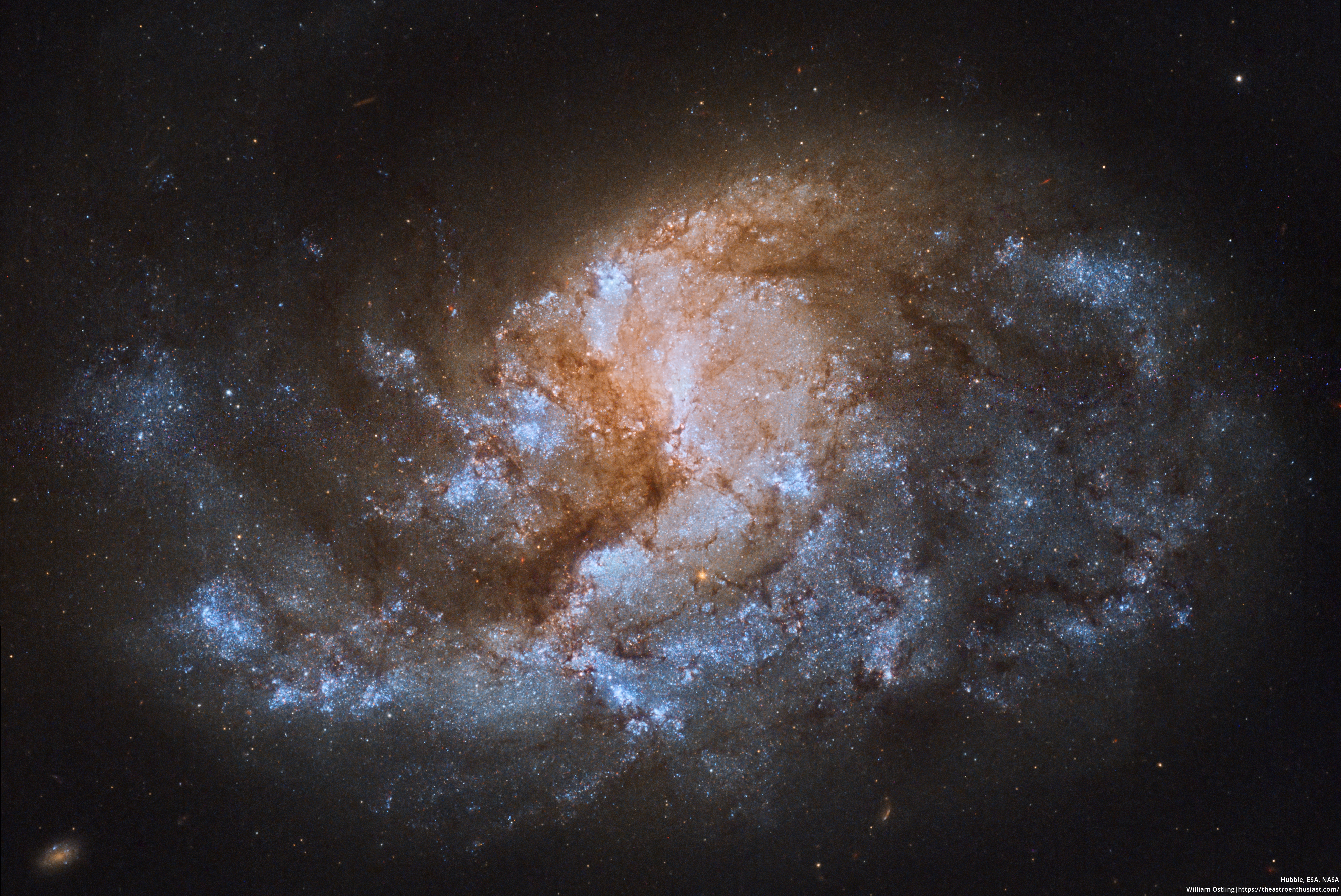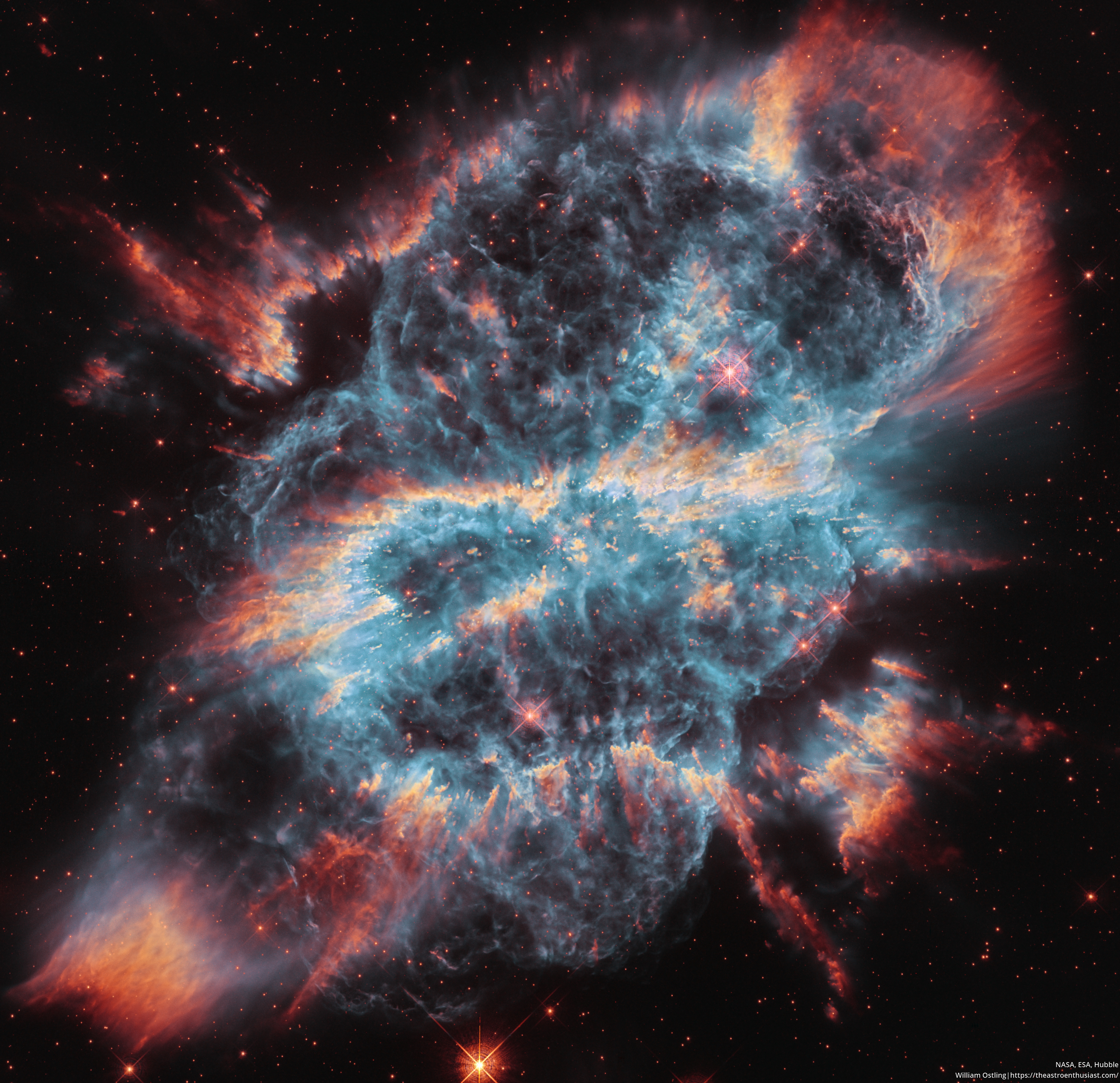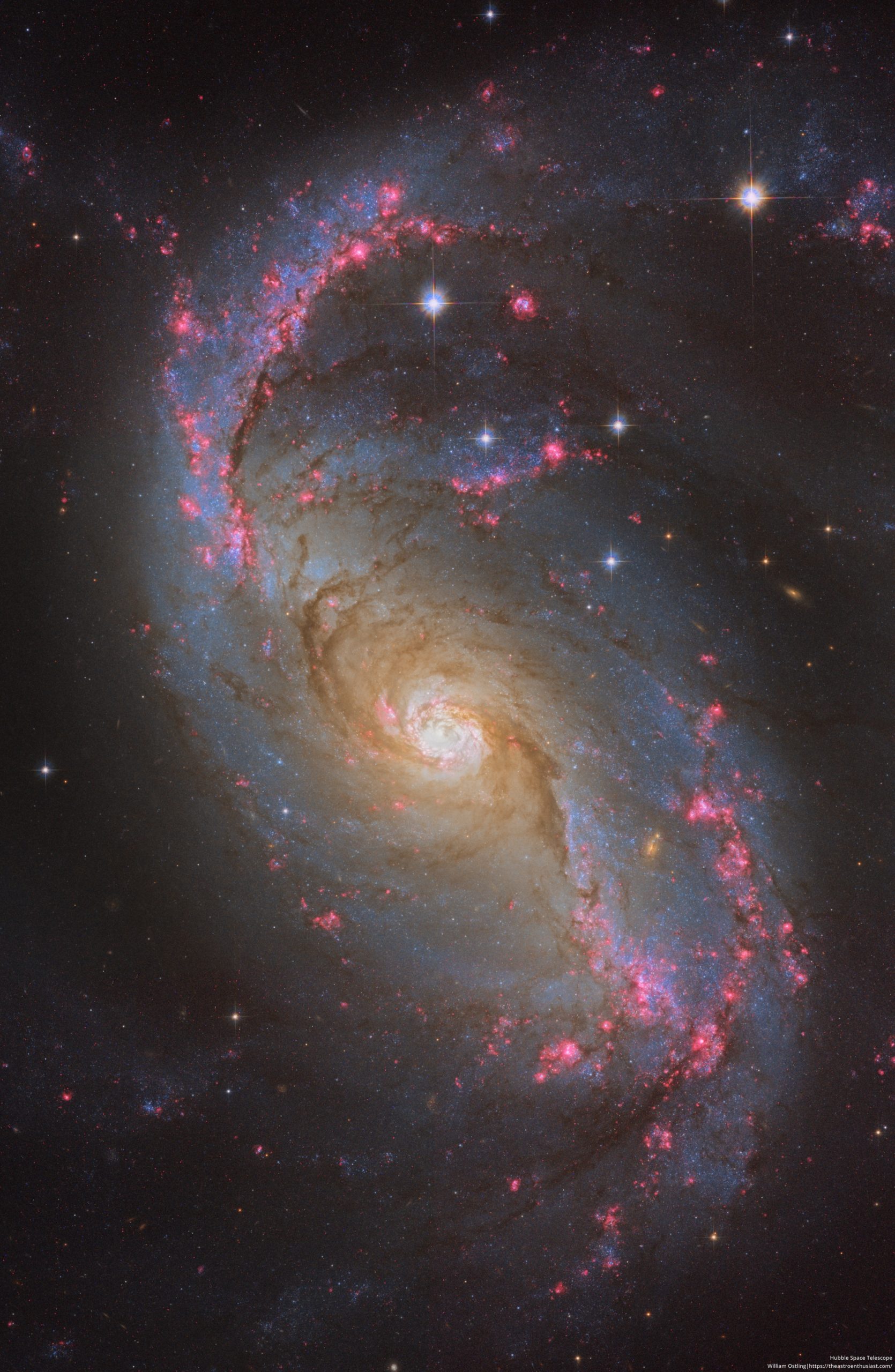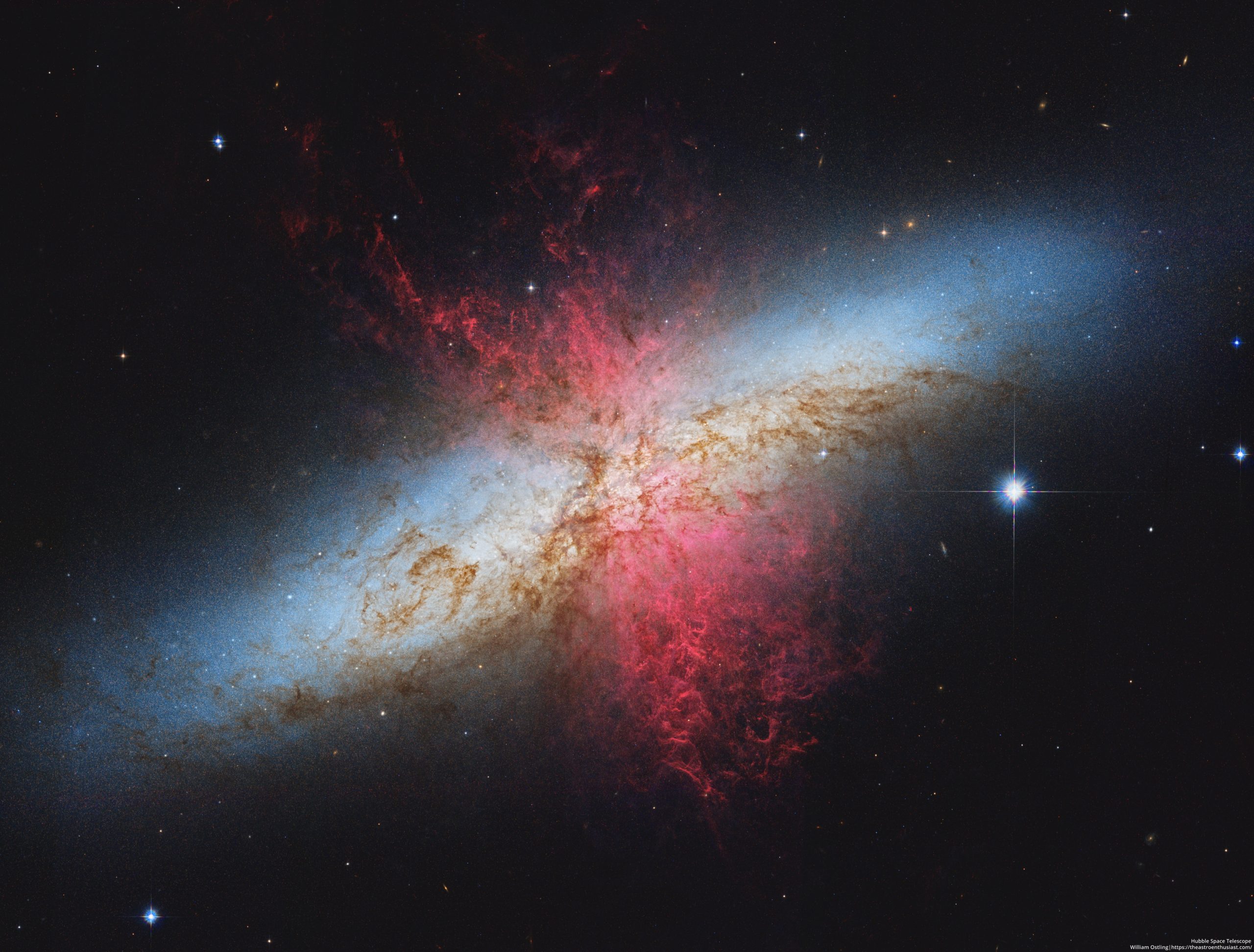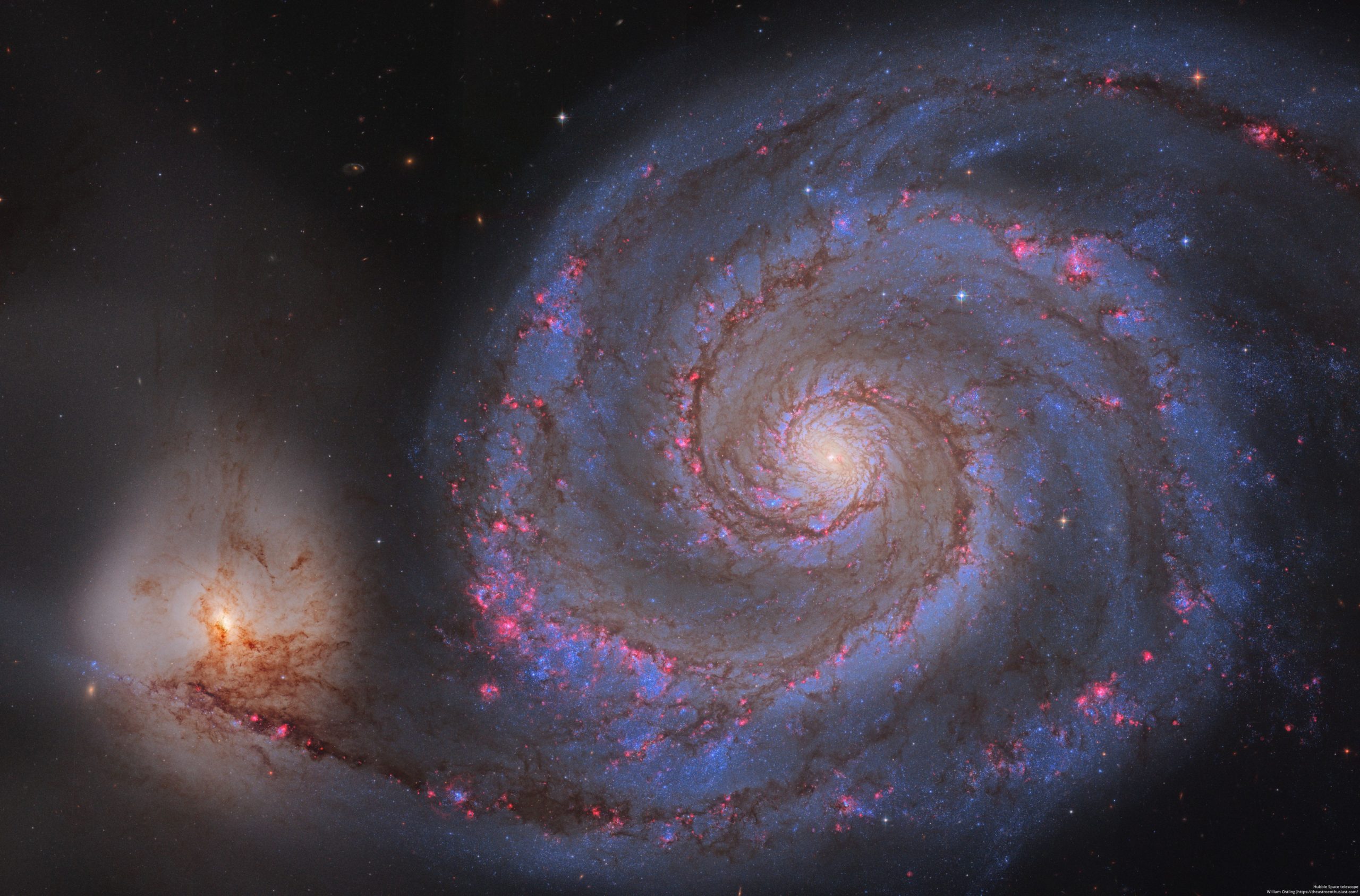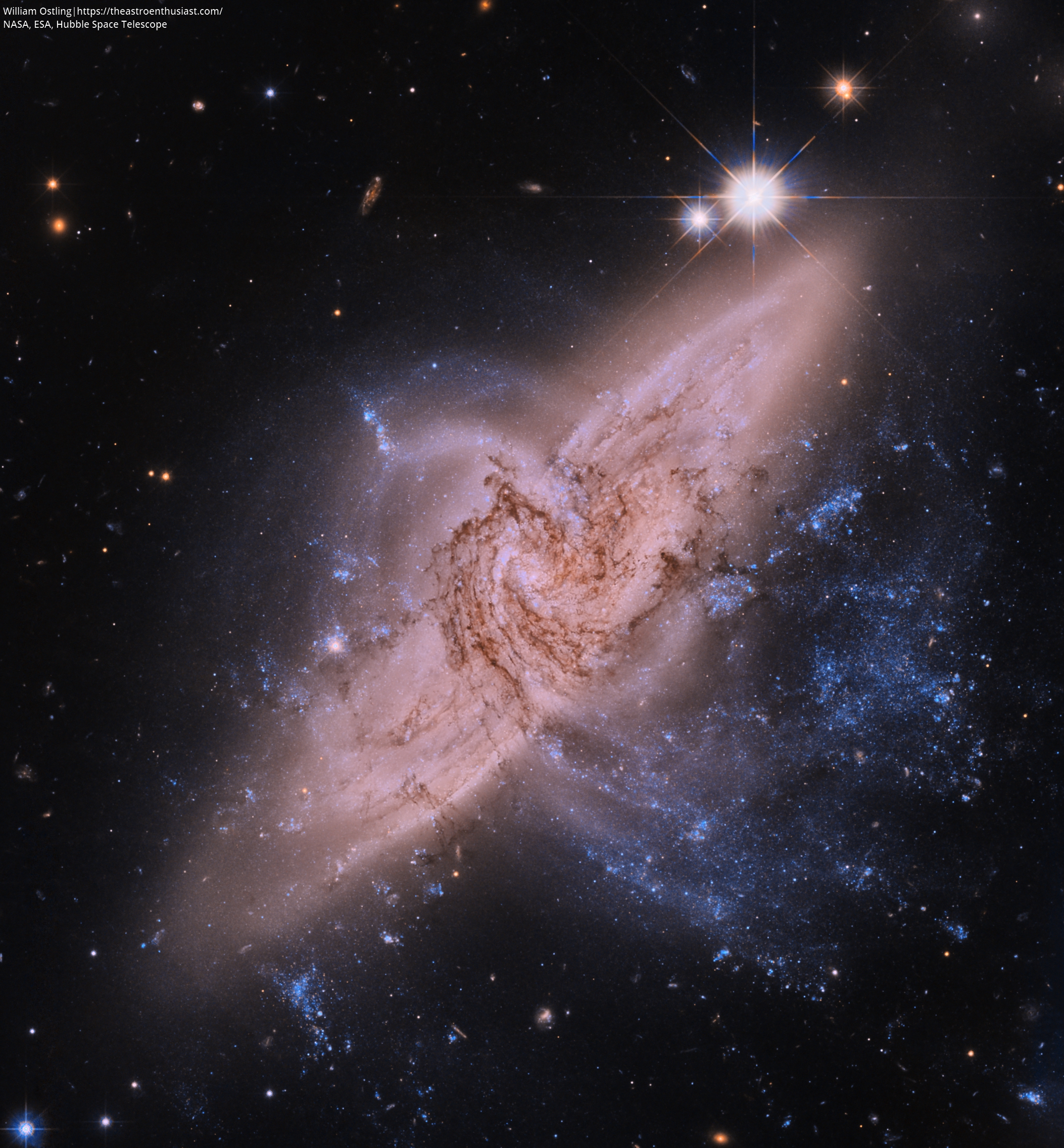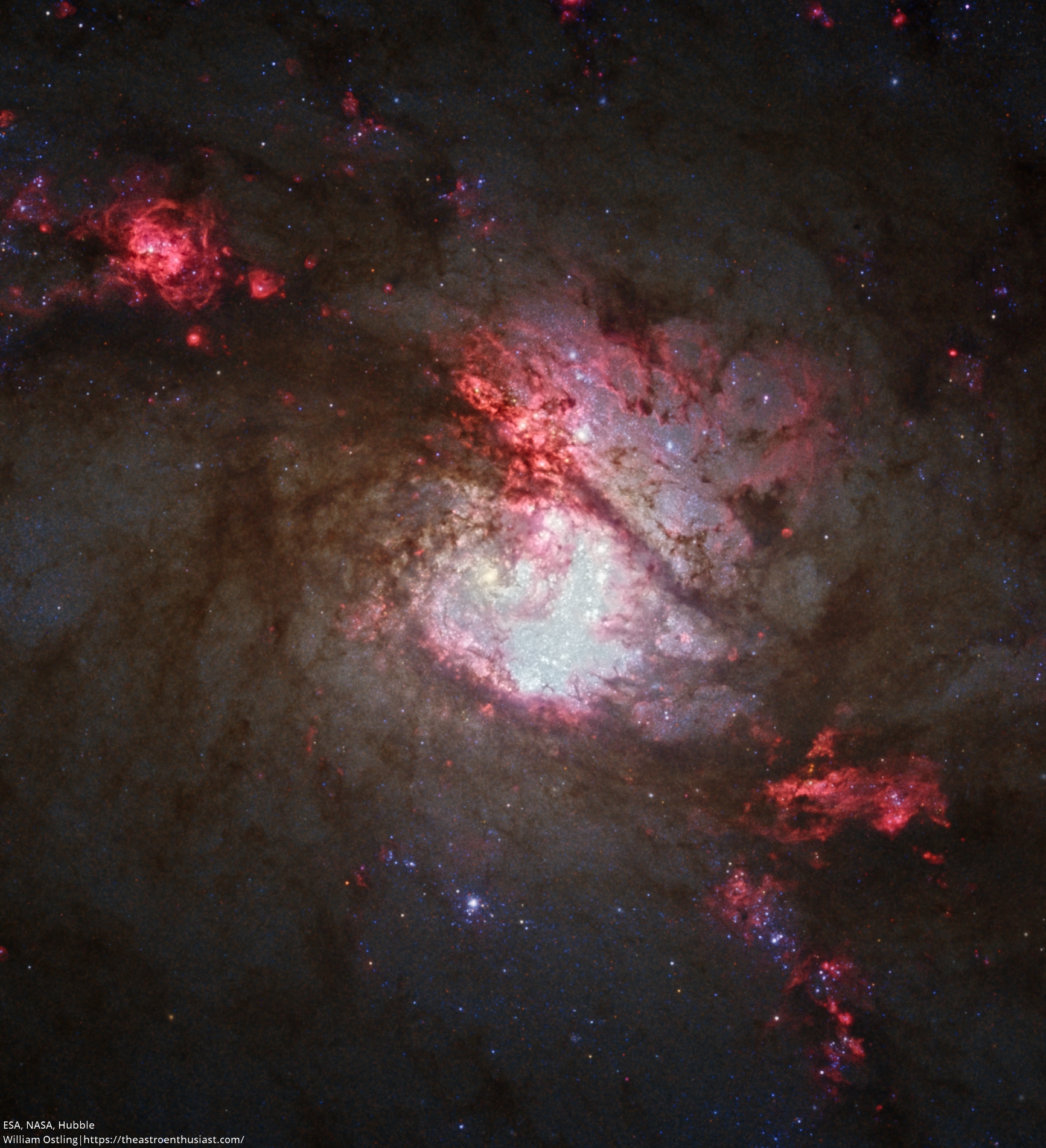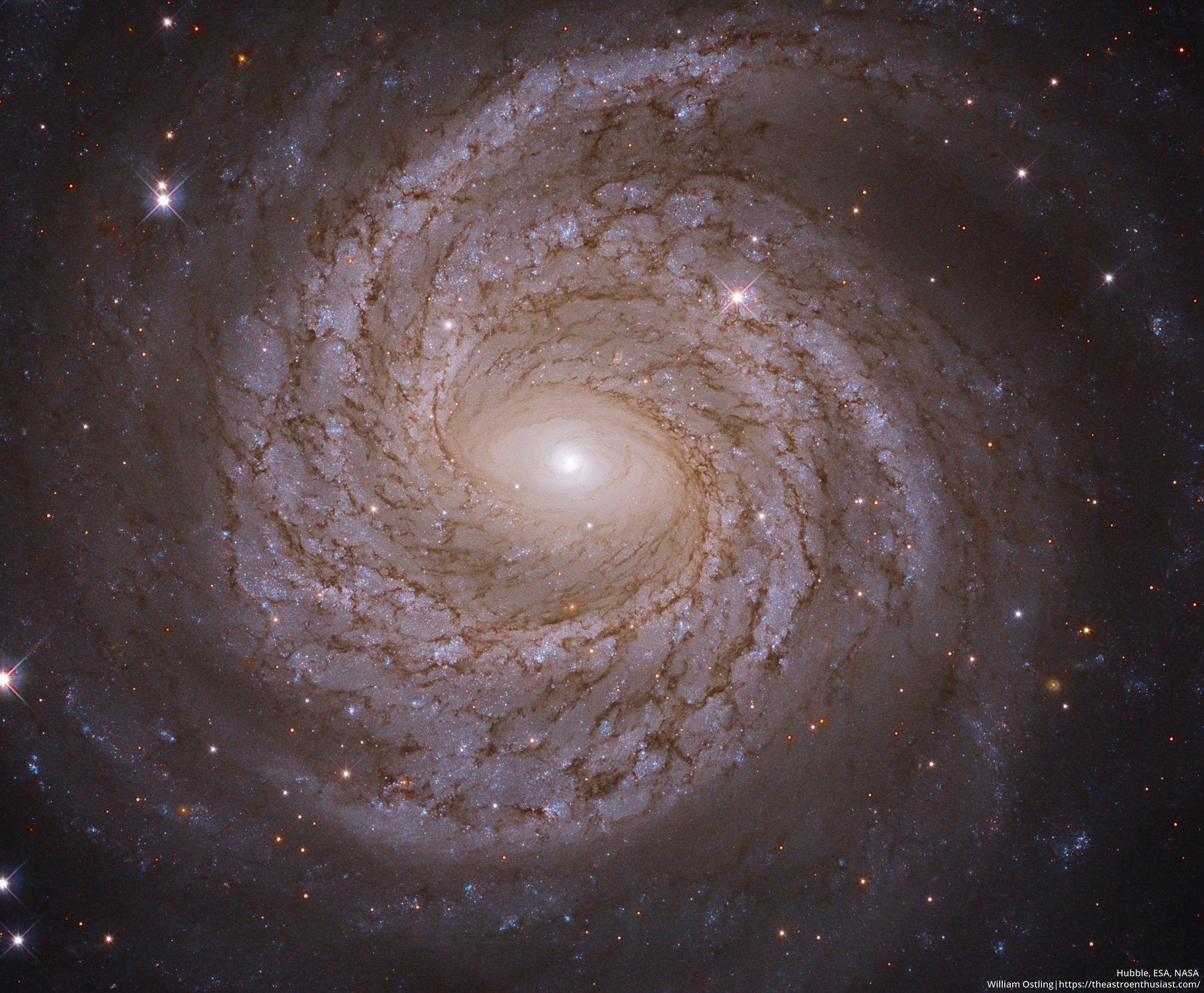NGC 1385 from Hubble
NGC 1385 is a strange spiral galaxy in the constellation Fornax. Originally a normal spiral, interaction with other galaxies nearby distorted its shape. The center of the galaxy was pulled and rotated 90 degrees to the shape it appears in now. Image: Details: All data was taken from the PHANGS-HST observation program. https://phangs.stsci.edu/ Processing: Crop stacking artifacts TGV+MMT denoise each channel Channel combine ArcinH stretch HDR multiscale transform MMT+Curves transformation Dark structure enhance LHE Curves trasnformation
Read more